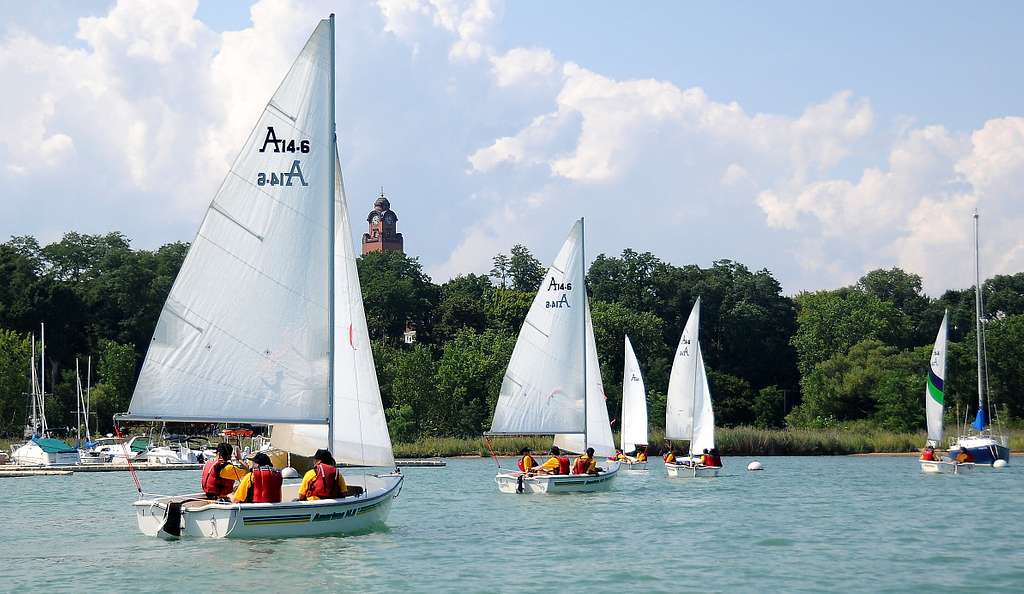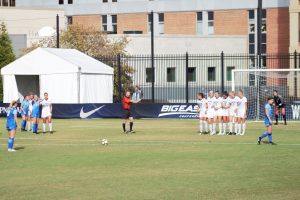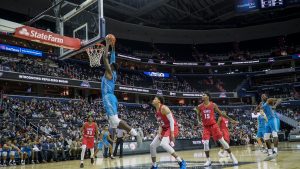On September 9, 2023, a day marked by challenging winds, the collegiate sailing world witnessed a display of strategic prowess and adaptability as Georgetown freshman Peter Barnard claimed victory on the opening day of the National Qualifier Regatta at the US Naval Academy in Annapolis, Maryland. Barnard’s fellow Hoya, sophomore Benjamin Smith, was able to finish with a tie for second place in the event. Despite less-than-ideal conditions, the duo emerged as the day’s top finishers, with stellar performances.
The regatta day got off to a slow start, as the initial easterly breeze caused unsuitable conditions for racing. Since the easterly breeze didn’t allow for the foggy morning to burn off, the race was postponed, and the sailors were brought back to shore. However, patience paid off as the breeze gradually lightened up, settling at a manageable three to six knots. Not everyone was thrilled with this turn of events, though; Smith, a sailor accustomed to strong winds ranging from 15-25 knots, said, “The light wind made it hard for me to do tacks and gybes I would normally be able to do in heavy winds.”
When the first race finally commenced, the sailors demonstrated a keen understanding of the course dynamics. Recognizing a pattern of increased wind pressure on the left side of the course during their pre-race analysis, they strategically positioned themselves as the pin-most boats, which gave them better wind as they sailed up toward the first mark. This early advantage catapulted them into a commanding position, allowing them to leverage their position over the entire fleet. In a venue characterized by light and shifty winds, Barnard said, “The need to seize opportunities early in the race was extremely important.” Their performance in the first race saw them round the top mark in first and second place, boosting their confidence and setting the tone for the regatta.
The second race unfolded with a similar strategy, as Smith once again identified a wealth of wind pressure on the left side of the course. Recognizing the importance of avoiding a risky confrontation for the pin-most position, they opted not to fight for it this time, especially in the light and consistently left-leaning conditions. The duo had to contend with a Navy sailor on their hip who was attempting to block their progress. Despite not enjoying the same level of initial gains as in the first race, Smith focused on consolidating their position, allowing the Navy sailor to take greater leverage. Smith remained within striking distance of the Navy sailor for the duration of the race, though, ultimately finishing the race in second place.
Although the day started with ideal light winds, the regatta organizers were forced to conclude the day’s racing with only two races completed because the wind went from 6 knots to 0 knots.
However, Smith’s impressive scores of first and second secured him the top position for the day, with Barnard right behind him. Their ability to adapt to the challenging conditions and make calculated decisions on the course demonstrated the essence of collegiate sailing, where consistency and strategic thinking often prevail over individual race wins.
After the regatta, Barnard said, “Although there was light wind and the competition was strong, I was able to stay focused and take the win.”
Smith said, “I am bummed that I couldn’t win in these conditions, but if I wasn’t going to win, I’m glad Peter was able to take it home for us.”





